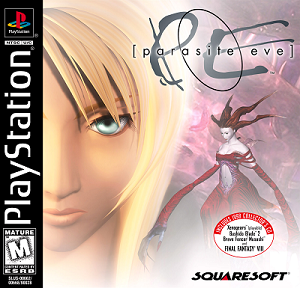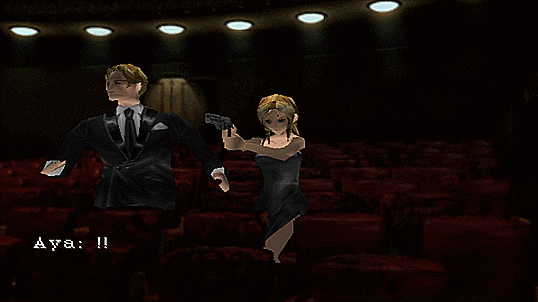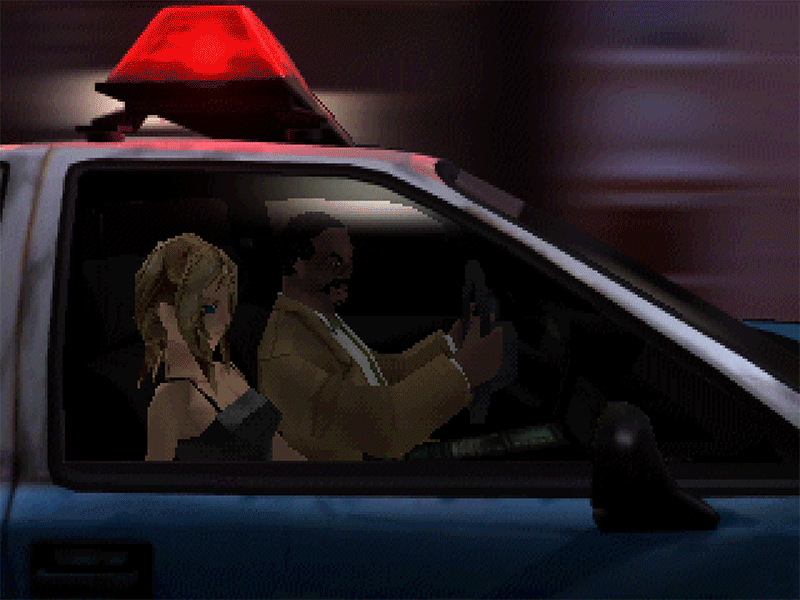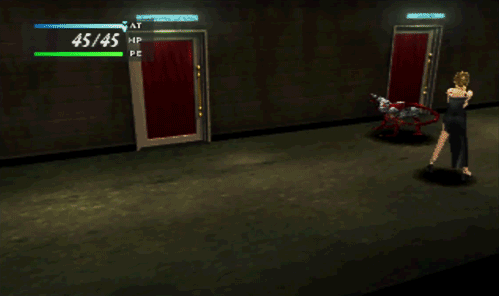Parasite Eve is a game that has been mostly forgotten in the video game canon as it has been summarily outshined by the many other games that reside within its genre. In short: if you haven’t heard of Parasite Eve, don’t feel bad. Parasite Eve is a video game that was released in 1998 for the PlayStation by what is now Square Enix. The story of the game is based on the book of the same name written by Hideaki Sena in 1995 that was a major hit in Japan; in the United States, it was an entirely different story. The story itself did not reach America until 7 years after the release of the first Parasite Eve game. What is interesting is that although the game was based on this book, it instead acts as a sequel to the book itself. The story of the game is as follows: Parasite Eve is a biological horror-themed turn-based action RPG that follows a half-Japanese NYPD officer named Aya Brea and her horrifying struggle with Eve, an “ancient evil” that is threatening all life on Earth through the revolt of mitochondria in the cells of New Yorkers.

The game, despite having been practically forgotten, has a lasting legacy in failure. Let me clarify: the game itself is incredible and extremely engaging, and I enjoyed every moment of it. The failure instead was in the game’s way of depicting the actual story of the game. The director of the game Takashi Tokita and the developmental team called Parasite Eve a “cinematic RPG,” an explicit attempt to meld the flash of film with what was at the time video game’s best storytelling tools. In my opinion, it seemingly didn’t work, but it succeeded in other aspects that will be discussed later.
Before we begin though, let’s begin by defining by cinematic RPG. The definition of this term is quite subjective and is up to the player. Some say that this genre is when a game adheres to the “laws” of a movie, instead of the “laws” or logic, reason, and reality. Others say that they are just simply interactive games that mimic non-interactive media, like films or TV shows. What I believe Tokita meant with the label is the usage of movie-like cut-scenes and added animation to simple and static backgrounds.

If Parasite Eve wanted to be as close to cinema as it could be at the time, I think it relatively succeeded. Most scenes with Aya, Daniel (her partner as a detective), and the sinister Eve show characters moving in simple, exaggerated gestures with text dialogue. Instead of using voiced dialogue sequences, there were instead small touches of animation and flair to highly detailed yet still backgrounds. One early scene has Aya and Daniel driving in a police cruiser to a crime scene, and the flashing police lights and the blurred images of the skyscrapers rushing by in the windshield add a bit of exciting drama while maintaining the slower pace of RPG stories.
Parasite Eve, however, despite taking several cinematic elements, only applies such elements to the scenery, but not to the characters themselves. In every location that Aya explores in New York, where she also fights randomly spawning monsters, the backgrounds are entirely static and unchanging. Parasite Eve seems to pick and choose when it wanted to be cinema-like and when it wanted to maintain the same static form of games prior to its creation.


Alongside this, there were several in-depth and beautiful pre-rendered cut scenes packed full of action that were liberally spread throughout the entirety of the game and were of higher quality than the actual game itself. The intended purpose of the cut-scenes was to act as a sort of bridge between the gameplay and different chapters (or days, as they are called in-game) while also creating a sense of drama in the game as well. So despite the text-based dialogue and the still background scenes, the sum of all these aspects was to try to create a game that mimicked film while still being an RPG.
Parasite Eve‘s cinematic cut-scenes aren’t as astounding or groundbreaking as they were in the late 90s, but there is a strange beauty about them now. The cinematography and style are quite amazing in their presentation and in the way that they present the narrative as well. No matter how appealing they are, they ultimately don’t fit in with the actual pace of the game. The fighting mechanics of the game are way slower than the action-packed film-like cut scenes; Aya, although she appears to be running, moves around at a walking-pace speed. The fight scenes also move at a snail’s pace: it takes time to aim, select the enemy, and to reload–so slow to the point that you can even die, be stunned, or get gravely injured in a matter of seconds. The slow gameplay between the highly dramatic and fast-paced CG-cut scenes just do not mesh well and make the storytelling aspect completely fall through, as the anticipation and drama are lost as the character slowly progresses through the game.

Despite the major complications Parasite Eve seemed to have with combining cinematographic elements with gameplay, the game shouldn’t stay forgotten, and in fact, should be recognized as a trailblazer for the games in the genre following Parasite Eve‘s release. I don’t think I would be too far off to say that in Parasite Eve‘s failure in telling the story, it gave other developers the chance to improve on what Square Enix did completely wrong. It is through Parasite Eve‘s failure that RPGs nowadays are able to become even more cinematic in their presentation, like in Resident Evil 4 (2005) and even Dragon Age: Origins (2009). Through learning from the mistakes of other games, developers were able to create more games that explored and expanded the RPG genre.
It truly is just as Albert Einstein said: “Failure is success in progress.”
Bibliography
Parasite Eve. Playstation, 1998.
Parasite Eve Wiki. Fandom, https://parasiteeve.fandom.com/wiki/Parasite_Eve_Wiki.
“Parasite Eve Retrospective: Square’s Resident Evil RPG – The Golden Bolt.” Youtube, uploaded by The Golden Bolt, 15 Dec. 2020, https://www.youtube.com/watch?v=BBokBXQ2GVo.
https://www.reddit.com/r/RPGdesign/comments/6ara1f/what_makes_a_cinematic_rpg/


Before reading this post you were right, I had not heard of Parasite Eve, but now I am glad that I have! I find early PlayStation 1 games like these so charming in the sense of how they push the consoles. After watching the cutscenes you have linked here, I just am still amazed about how they were able to create stylized three dimensional graphics–I know they looked forced and stiff, but that just grows my appreciation for games like these. By seeing the limits of the game’s graphic, I am even more appreciated of how far we have come, and how gaming has pushed even the cinema industry when it comes to these graphical leaps. Parasite Eve is great gateway into seeing how video games from even early on have strived to create a cinematic experience.